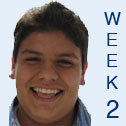First and Second Language Acquisition
Do you remember learning how to speak your first language? As a small child, were you aware of the grammatical rules that governed your baby utterances and first phrases? Probably not. However, from before we can remember, our brains were performing highly sophisticated levels of thinking that began the communication process through language. “The brain is by nature a magnificent pattern-detecting apparatus, even in the early years” (Hart, 1999, p.127). So, how do children learn language? How much is nature and how much is nurture? Some traditional linguists have argued that humans are born with the hard-wired ability to recognize grammar as a universal phenomenon. While current research recognizes the human brain’s seemingly innate ability to pick up languages (nature), it also focuses on the environmental and social factors that affect language development (nurture).
The human body is an amazing machine built with capabilities far beyond the scope of modern science. Even after thousands of years of study and research, the complexities of physiological phenomena that make up the functions of the human brain, still elude scientific comprehension. Experts still do not completely understand how babies develop language skills. Yet what is clear is the fact that the ability to comprehend and produce language is a highly complex skill that requires critical and creative thinking. And it is one that humans are capable of at a very early age.
Experts can now say with some conviction that by the time babies are all of nine months old, they are performing statistical analyses of the language they hear. Through this knowledge they can figure out that “big baby” must be two words, “big” and “baby,” and not three words, “bi,” gba,” and “by.” The sounds “gba” never occur together in English. By knowing the possible sequences of sounds, infants discover where words begin and end . . .. They attend to those cues--the sounds, the order to the sounds, and the stress patterns--to locate the building blocks of language. (Golinkoff & Hirsh-Pasek, 1999, pp. 76-77).
So, what happens inside the infant mind? Are brains hard-wired computers ready to input and output the code of language? Do our environments provide us with the linguistic software that becomes our language database? Our answers to these questions have evolved as our understanding of brain functions have advanced.
This week, we are going to discuss historical and current research regarding first and new language development. We will read about the common stages of language acquisition in order to gain a better understanding of the experiences of the English learners in our classes. We will also consider how the gap between social language BICS (Basic Interpersonal Communicative Skills) and academic language CALP (Cognitive Academic Language Proficiency) play a role in the academic and social lives of ELLs.








